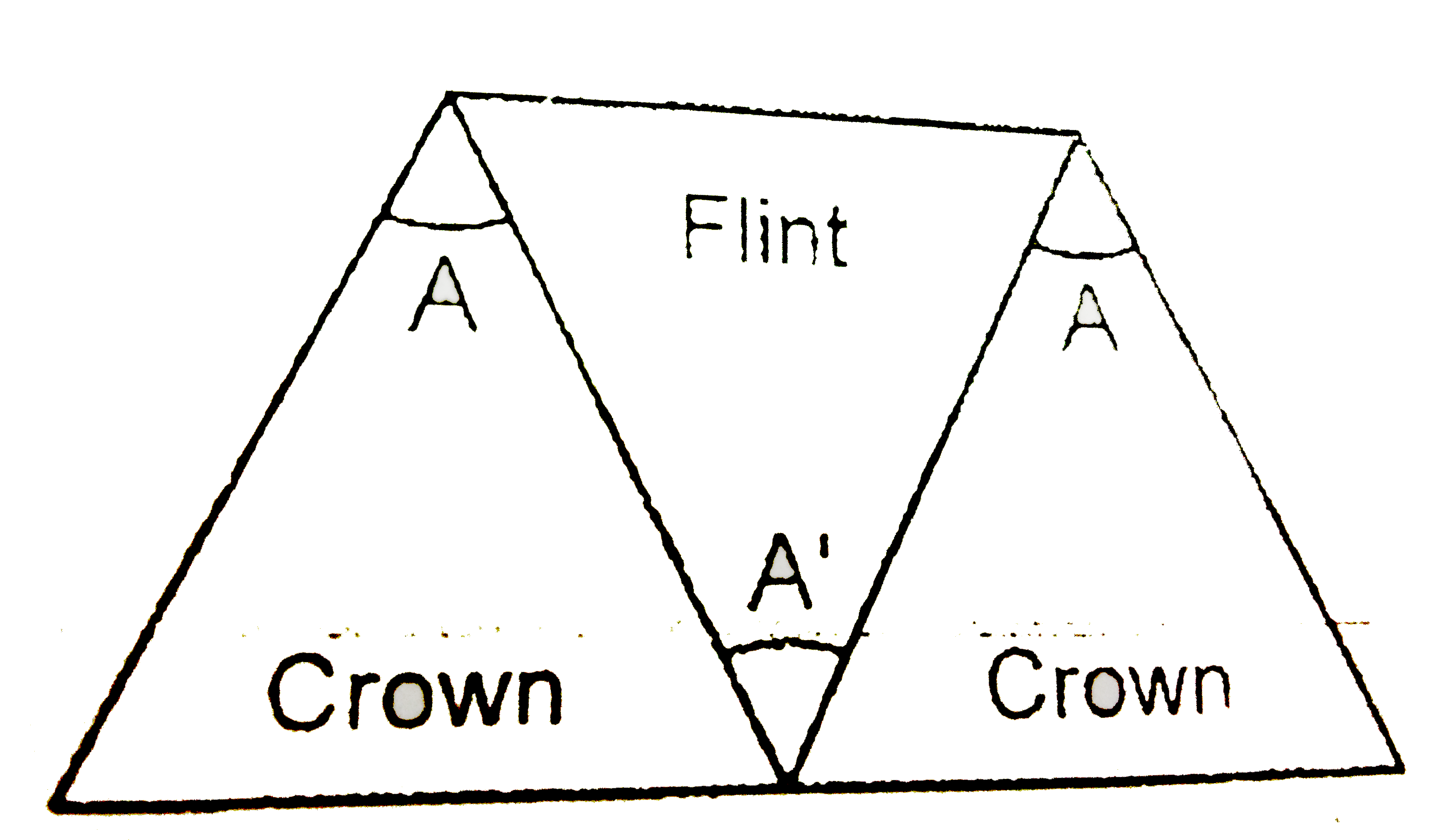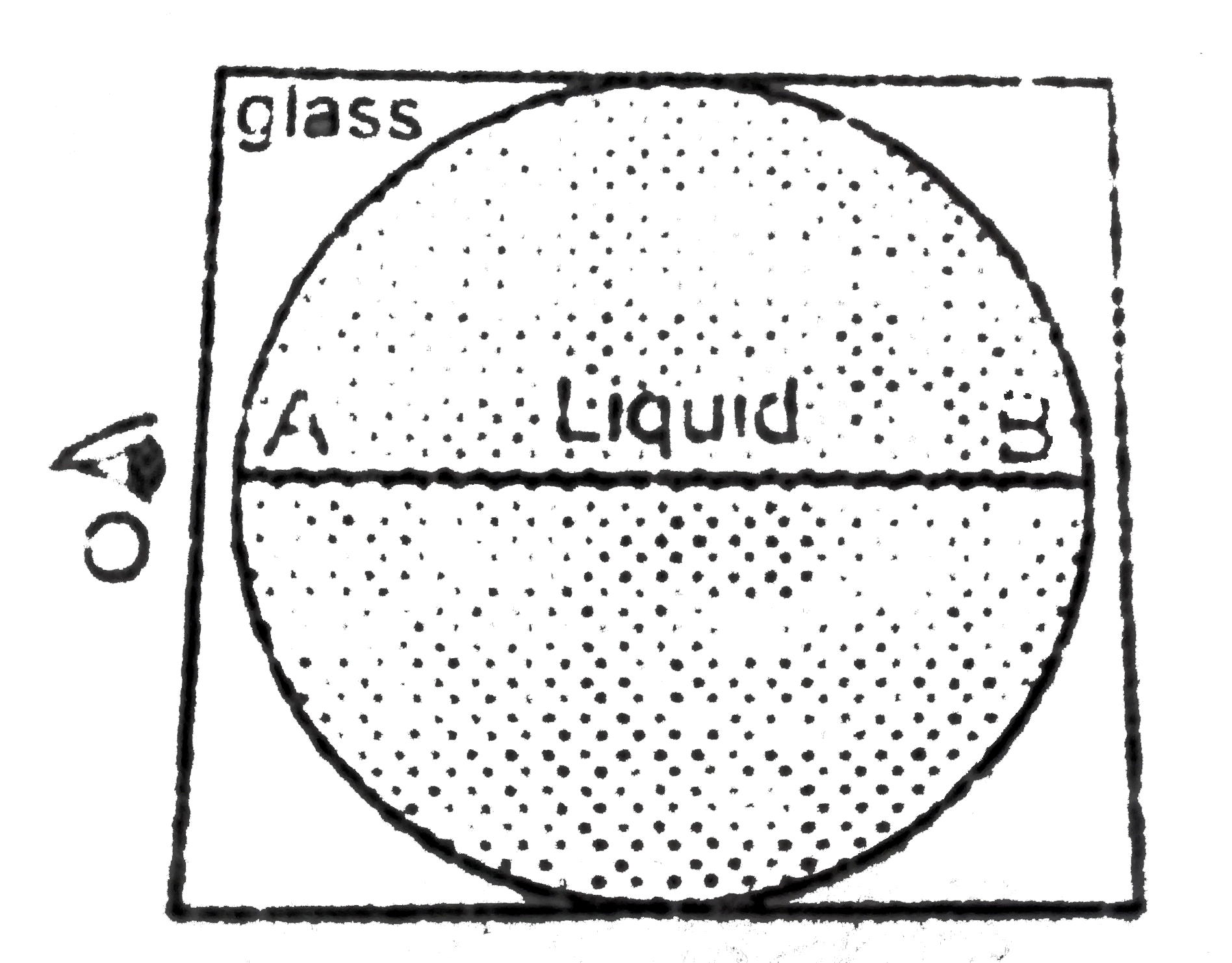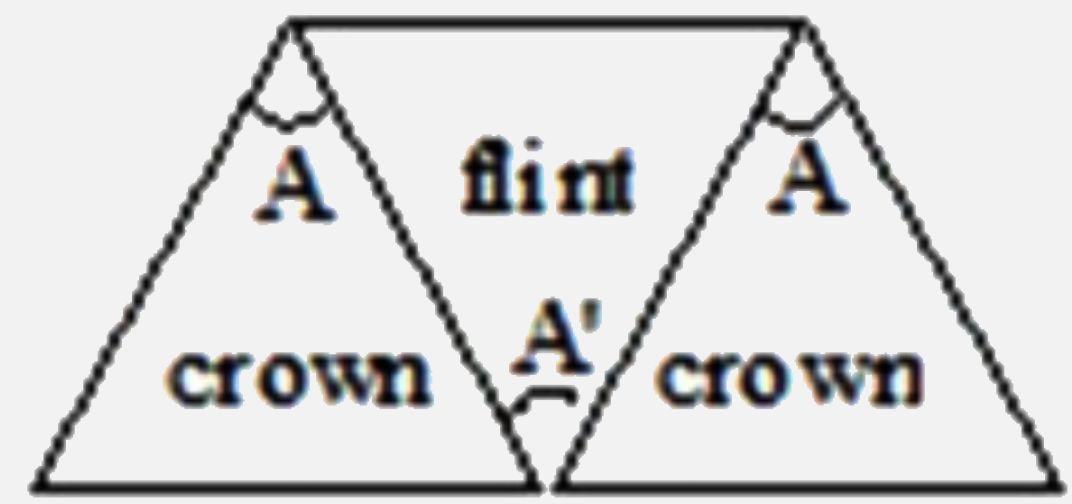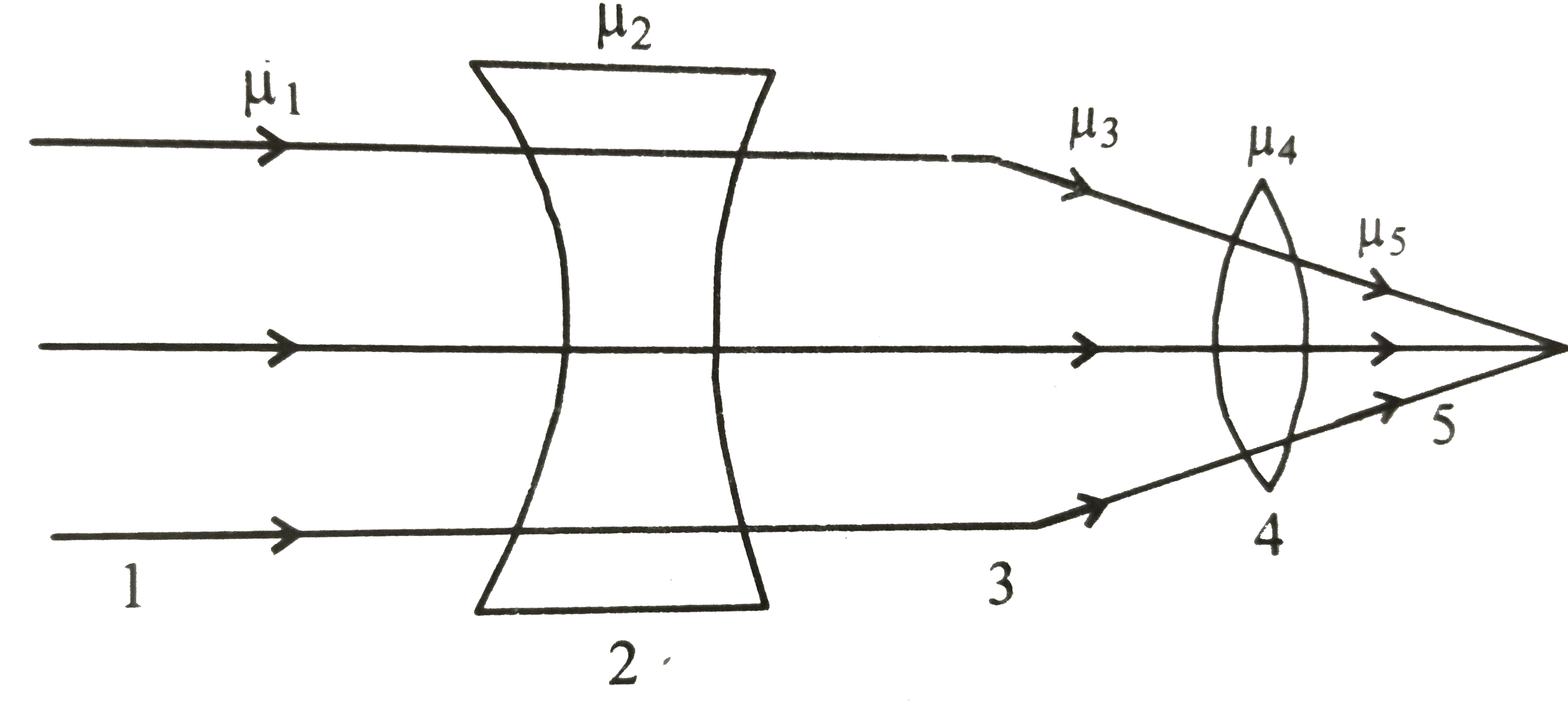If μ=uy then find μuy
Step by step video & image solution for If mu=u^y then find mu_(uy) by Maths experts to help you in doubts & scoring excellent marks in Class 12 exams.
Similar Questions
R is the radius of curvature for both the surfaces of lens shown in figure. Refractive index μ1,μ2andμ3 are indicated in the figure. Light rays are incident from the side of refractive index μ1 as shown. If f is focal length of lens then find f/R for μ1=1,μ2=1.5,μ3=2.
|0123456789|View SolutionThree thin prisms are combind as shwon in figure. The refractive indices of the crown glass for red, yhelwo and violet rays are μr,μy and μv respectively and those for the flint glass are μ'r,μ'y and μv respectively . Find the ratio A'/A for which (a) system produces deviation without dispersion (achromatic combination ) and (b) system produces dispersion without deciation (direct vision arrangement).
 View Solution
View Solution
Knowledge Check
- Question 1 - Select One
If μ the mean of distribution (yi,fi), then ∑fi(yi−μ)=
AM.D.BS.D.C0DRelative frequency - Question 2 - Select One
The observer 'O' sees the distance AB as infinitely large. If refractive index of liquid is μ1 and that of glass is μ2, then μ1μ2 is :
 .A2B1/2C4Dnone of these
.A2B1/2C4Dnone of these - Question 3 - Select One
A carrier wave is modulated by n number of sine waves with modulation indices μ1,μ2,μ3+.... The total modulation index (μ) of the wave is
Aμ1+μ2+μ3+....B√u21+μ22+μ23+....C[μ21+μ22+μ33+....n]1/2D[nμ21+μ32+μ23+......]1/2
If μ is the universal set and P is a subset of μ then what is P∩(P−μ)∪(μ−P) equal to
View SolutionThree thin prisms are combined as shown in figure . The refractive indices of the crown glass for red , yellow and violet rays are μr,μyandμv respectively and those for the flint glass are μr',μy'andμv' respectively . Find the ratio A'A for which , there is no net angular dispersion (A and A' are respective deviations )
 View Solution
View SolutionIf cot[cot−1(725)]=1μ, where μ∈R. Then find [μ], where [⋅] denotes GIF
View Solution
In the figure shown μ1,μ2,μ3,μ4andμ5 are the refractive
indices of the mediums 1,2,3,4 and 5 respectively. Consider
the following:
(1) μ1=μ2 (2) μ3=μ4=μ5
(3) μ2<μ3 (4) μ4>μ5
Which of the above are correct?View SolutionRepeat the above problem, if instead of μ, we are given μs and μk,where μs=0.6 and μk=0.4.
View Solution
